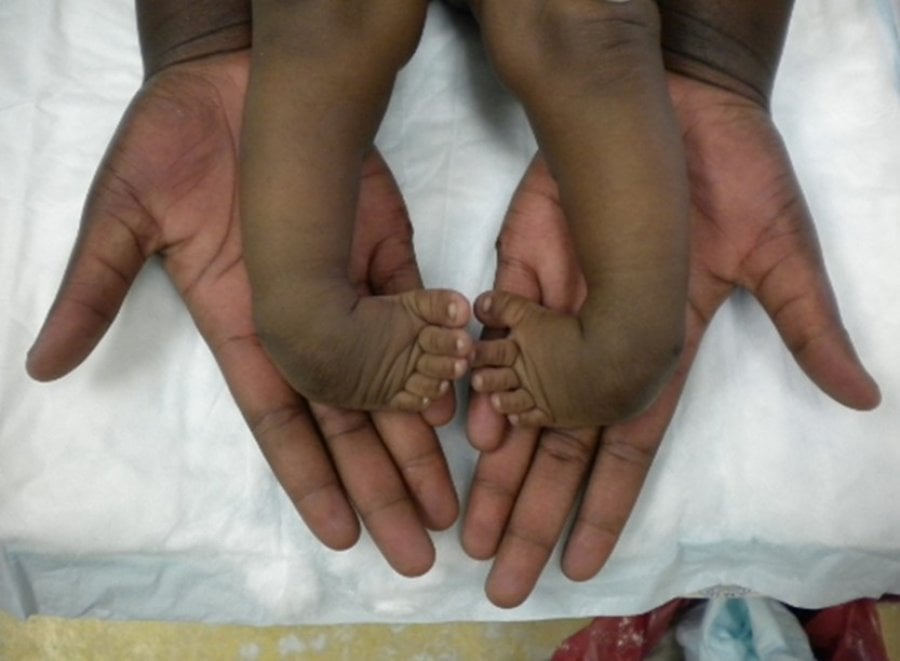New estimates of global prevalence of clubfoot
28 September 2023 London School of Hygiene & Tropical Medicine London School of Hygiene & Tropical Medicine https://lshtm.ac.uk/themes/custom/lshtm/images/lshtm-logo-black.png
Global Clubfoot Initiative
New estimates of the global prevalence of clubfoot have been published for the first time in The Lancet's eClinical Medicine.
The research led by Dr Tracey Smythe with partners at the University of Oxford reveals that globally 1.18 babies per 1000 births are born with clubfoot. This rate is higher for low- and middle-income countries (LMICs), particularly in the South-East Asia and Africa regions where the prevalence is 1.80 and 1.31 respectively.
Clubfoot is a common congenital condition where the foot is fixed in a downward and inward position. This causes pain and can impair child mobility if left untreated, resulting in disability. Clubfoot is correctable, with treatment most effective when initiated early.
Until now, there has been no known estimates of the global prevalence of clubfoot, despite estimates existing for LMICs.
The research team, which included the London School of Hygiene & Tropical Medicine (LSHTM), Stellenbosch University and the University of Oxford, conducted a review of studies reporting the prevalence of clubfoot across the world in the last 10 years. 35 studies were included in the analysis, encompassing 36 countries and five World Health Organization (WHO) regions.
Dr Tracey Smythe, Associate Professor at LSHTM, who led the study, said:
“An improved understanding of the global birth prevalence of clubfoot is needed to inform public policy, health planning, and allocation of limited health-care resources for early intervention and treatment. These insights aren't just numbers; they are the roadmap to breaking down care barriers, spotlighting inequities, and partnering with affected children and their families to provide effective care.”
The research team reviewed studies published from 1 January 2012 to 9 February 2023. The 35 studies selected for analysis included 44,818,965 registered births, of which 35,554 were babies born with clubfoot. The prevalence of clubfoot ranged from 0.86 per 1,000 births in the Western Pacific Region to 1.80 per 1,000 births in the South-East Asia Region with a global prevalence of 1.18 per 1,000 births. No data were found for the Eastern Mediterranean Region.
The findings highlight the significant burden of the condition, particularly in LMICs, and demonstrate the need for equitable access to effective treatment and prevention strategies especially in resource-limited settings, to reduce long-term disability.
The research team also identified opportunities for standardising clubfoot data collection and reporting, noting that while all the studies included in the review reported definitions of clubfoot, this was not consistent. As a result, incomplete data may have been included in the analysis. Due to the stigma surrounding disability it is likely that the numbers of children born with clubfoot are underreported meaning the global prevalence could be higher than estimated.
The cause of clubfoot is unknown in most cases, but research suggests that it is linked to genetics and environmental factors.
If you enjoyed this article and would like to build a career in global health, we offer a range of MSc programmes covering health and data, infectious and tropical diseases, population health, and public health and policy.
Available on campus or online, including flexible study that works around your work and home life, be part of a global community at the UK's no.1 public health university.